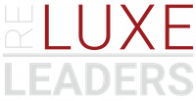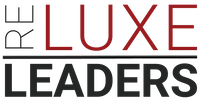7 Insights Into Sotheby’s International Realty’s Luxury Brokerage Leadership
An analytical evaluation of Sotheby’s International Realty™—unpacking its heritage, market position, leadership complexities, agent recruitment and retention models, digital evolution, and performance metrics through the lens of elite brokerage leadership.
Heritage and Global Footprint
Founded in 1976 as an extension of the venerable Sotheby’s Auction House (established in 1744), Sotheby’s International Realty™ leverages an unparalleled legacy woven into luxury culture and art patronage. This origin story provides a timeless foundation that appeals to affluent clientele who value heritage as much as exclusivity.
Today, Sotheby’s International Realty’s footprint spans over 1,000 offices across 79 countries and territories, delivering remarkable global reach combined with localized market expertise. This structure creates a potent platform for brokering cross-border luxury transactions—connecting historic estates with contemporary luxury properties to discerning international buyers.

Competitive Differentiators in Luxury Brokerage
Unlike peers such as Compass and Douglas Elliman, Sotheby’s International Realty’s competitive edge rests firmly on:
- Heritage-driven brand power: Association with Sotheby’s Auction House provides unique access to high-net-worth collectors and a luxury culture ecosystem.
- Exclusive, art-inspired property marketing: Properties are positioned not merely as real estate but as curated lifestyle and art assets.
- Global consistency fused with local expertise: Strong local broker autonomy ensures authentic market knowledge while benefiting from a unifying international luxury standard.
- High-caliber referral network: The brand’s global network uniquely facilitates high-value referrals and client introductions.
While Compass leverages technology aggressively and Douglas Elliman boasts a broad market penetration, Sotheby’s luxury positioning is less transactional and more experiential, emphasizing cultural affinity and exclusivity.
Leadership and Scalability Challenges
Operating a global luxury brokerage like Sotheby’s International Realty demands nuanced leadership addressing complexities including:
- Maintaining brand consistency: Across over 1,000 independent offices, leadership must enforce strict brand guidelines while empowering local innovation.
- Scaling without diluting exclusivity: Growth strategies must balance expansion with preserving the ultra-luxury client experience, a tension many top brokerage owners face as they scale.
- Succession planning: With many boutique owners aging out of direct operational roles, establishing next-generation leaders who understand luxury culture is critical.
- Global regulatory variability: Navigating diverse international real estate laws complicates standardized leadership processes and requires savvy local broker partnerships.
Recruitment and Retention of Top Luxury Agents
Sotheby’s International Realty’s strength depends largely on its top-tier agents. Models for recruiting and retaining elite luxury professionals include:
- Selective affiliation process: Agents undergo rigorous vetting, ensuring alignment with the brand’s reputation and service levels.
- Extensive brand leverage: Agents benefit from global brand recognition and the cachet associated with Sotheby’s, often leading to accelerated client trust and premium listings.
- Comprehensive training and support: Continuous education on luxury market trends, digital marketing, and client management fosters agent excellence and loyalty.
- Robust referral and networking facilitation: The brokerage actively cultivates community and collaboration among agents, amplifying opportunities for high-value client engagements.
Nonetheless, retention challenges arise from competitive offers by tech-driven brokerages promising higher splits or innovative lead generation—requiring Sotheby’s leadership to continually innovate incentive structures and cultural engagement.
Digital Transformation and Marketing Tools
Sotheby’s International Realty has embraced digital marketing but faces transformation challenges in maximizing technology’s potential without compromising personalized luxury experiences. Their digital toolset currently includes:
- High-definition property videos and immersive virtual tours.
- Elegant, user-focused web platforms featuring curated content and high-end publication integration (Reside magazine).
- Social media channels tailored to luxury narratives and lifestyle branding rather than pure transactional listings.
Areas for strategic enhancement include harnessing AI-driven data analytics for lead qualification, AI-based content personalization, and integrating proptech solutions for operational scalability.
For a broader perspective on luxury real estate marketing innovation, see National Association of Realtors® Real Estate Statistics and Harvard Business Review on Data Analytics.
Business Performance & Market Share Analysis
Quantitative metrics reflecting Sotheby’s International Realty’s market position are scarce publicly—but key performance indicators for brokerage leaders evaluating Sotheby’s include:
- Market share in top-tier luxury segments: Sotheby’s consistently ranks among the top luxury networks worldwide, though exact percentages fluctuate regionally.
- Average transaction volume: High average sales prices offset fewer but more exclusive transactions compared to mass-market brokerages.
- Agent productivity and retention rates: Premium commission splits combined with brand support aim to sustain high-tier agent productivity.
- Client acquisition cost and lifetime value: Leveraging brand equity reduces average acquisition costs for ultra-high-net-worth client segments, enhancing profitability.
Leaders seeking comparable data should consider subscription-based industry analyses like Real Trends’ annual Real Estate Brokerage Rankings for benchmarking.
Conclusion: Legacy, Market Position, and Next Steps
Sotheby’s International Realty™ occupies a distinctive niche at the intersection of heritage, luxury, and global reach. For leaders within or considering affiliation, understanding its operational realities—including scalability challenges, recruitment imperatives, and digital evolution—is essential to preserving and extending its legacy.
Success in this echelon requires disciplined leadership: maintaining exclusivity while embracing innovation, nurturing top agent talent, and applying sophisticated business metrics to guide growth.





